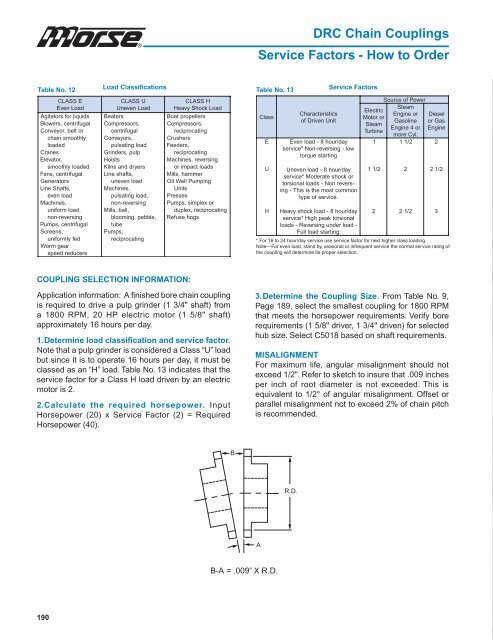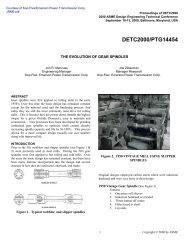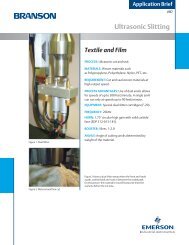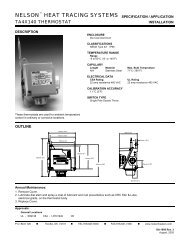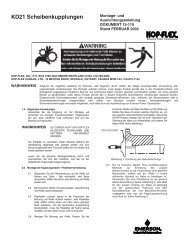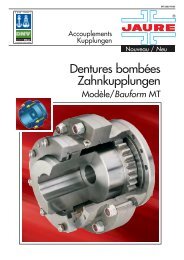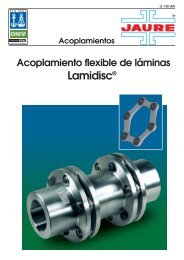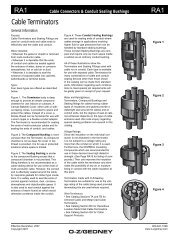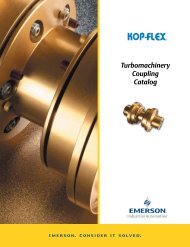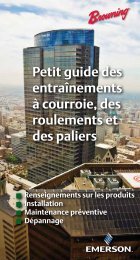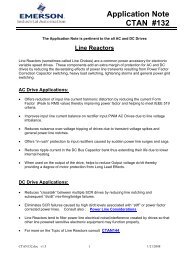Kop-Flex Industrial Coupling Product Catalog - Form 8887E
Kop-Flex Industrial Coupling Product Catalog - Form 8887E
Kop-Flex Industrial Coupling Product Catalog - Form 8887E
Create successful ePaper yourself
Turn your PDF publications into a flip-book with our unique Google optimized e-Paper software.
DRC Chain <strong>Coupling</strong>s<br />
Service Factors - How to Order<br />
Table No. 12<br />
CLASS E<br />
Even Load<br />
Agitators<br />
for liquids<br />
lowers, centrifugal<br />
Conveyor,<br />
belt or<br />
hain smoothly<br />
loaded<br />
Cranes<br />
Elevator,<br />
smoothly<br />
loaded<br />
ans, centrifugal<br />
Generators<br />
ine Shafts,<br />
ven load<br />
Machines,<br />
niform load,<br />
on-reversing<br />
Pumps,<br />
centrifugal<br />
creens,<br />
uniformly<br />
fed<br />
Worm gear<br />
speed reducers<br />
Load Classifications<br />
B ,<br />
c ,<br />
F ,<br />
L ,<br />
e ,<br />
u ,<br />
n ,<br />
S ,<br />
CLASS U<br />
Uneven Load<br />
CLASS H<br />
Heavy Shock Load<br />
Beaters<br />
Boat propellers<br />
C ompressors<br />
Compressors,<br />
centrifugal<br />
reciprocating<br />
Conveyors<br />
Crushers<br />
p ulsating load<br />
Feeders,<br />
Grinders,<br />
pulp<br />
reciprocating<br />
Hoists<br />
Machines, reversing<br />
Kilns<br />
and dryers<br />
or impact loads<br />
Line<br />
shafts<br />
Mills, hammer<br />
uneven<br />
load<br />
Oil Well Pumping<br />
Machines<br />
Units<br />
pulsating<br />
load Presses<br />
non-reversing<br />
Pumps, simplex or<br />
Mills,<br />
ball<br />
duplex, reciprocatin<br />
blooming,<br />
pebble Refuse hogs<br />
tube<br />
Pumps<br />
reciprocating<br />
g<br />
Table No. 13<br />
Class<br />
E<br />
U<br />
H<br />
Characteristics<br />
of Driven Unit<br />
Service Factors<br />
Even load - 8 hour/day<br />
service* Non-reversing - low<br />
torque starting<br />
Uneven load - 8 hour/day<br />
service* Moderate shock or<br />
torsional loads - Non reversing<br />
- This is the most common<br />
type of service.<br />
Heavy shock load - 8 hour/day<br />
service* High peak torsional<br />
loads - Reversing under load -<br />
Full load starting.<br />
Source of Power<br />
Steam<br />
Electric<br />
Engine or Diesel<br />
Motor or<br />
Gasoline or Gas<br />
Steam<br />
Engine 4 or Engine<br />
Turbine<br />
more Cyl.<br />
1 1 1/ 2 2<br />
1 1/2 2 2 1/ 2<br />
2 2 1/ 2 3<br />
* For 16 to 24 hour/day service use service factor for next higher class loading.<br />
Note—For even load, stand by, seasonal or infrequent service the normal service rating of<br />
the coupling will determine its proper selection.<br />
COUPLING SELECTION INFORMATION:<br />
Application information: A finished bore chain coupling<br />
is required to drive a pulp grinder (1 3/4" shaft) from<br />
a 1800 RPM, 20 HP electric motor (1 5/8" shaft)<br />
approximately 16 hours per day.<br />
1. Determine load classification and service factor.<br />
Note that a pulp grinder is considered a Class “U” load<br />
but since it is to operate 16 hours per day, it must be<br />
classed as an “H” load. Table No. 13 indicates that the<br />
service factor for a Class H load driven by an electric<br />
motor is 2.<br />
2. Calculate the required horsepower. Input<br />
Horsepower (20) x Service Factor (2) = Required<br />
Horsepower (40).<br />
3. Determine the <strong>Coupling</strong> Size. From Table No. 9,<br />
Page 189, select the smallest coupling for 1800 RPM<br />
that meets the horsepower requirements. Verify bore<br />
requirements (1 5/8" driver, 1 3/4" driven) for selected<br />
hub size. Select C5018 based on shaft requirements.<br />
MISALIGNMENT<br />
For maximum life, angular misalignment should not<br />
exceed 1/2". Refer to sketch to insure that .009 inches<br />
per inch of root diameter is not exceeded. This is<br />
equivalent to 1/2° of angular misalignment. Offset or<br />
parallel misalignment not to exceed 2% of chain pitch<br />
is recommended.<br />
B<br />
R.D.<br />
A<br />
B-A = .009” X R.D.<br />
190


